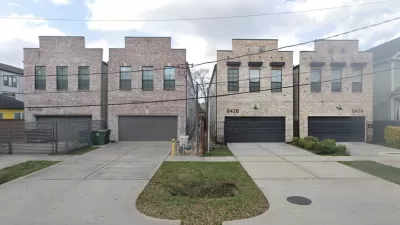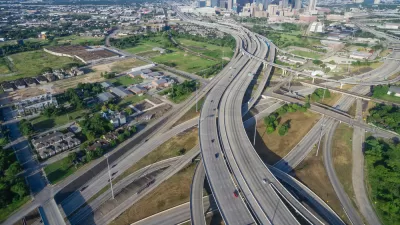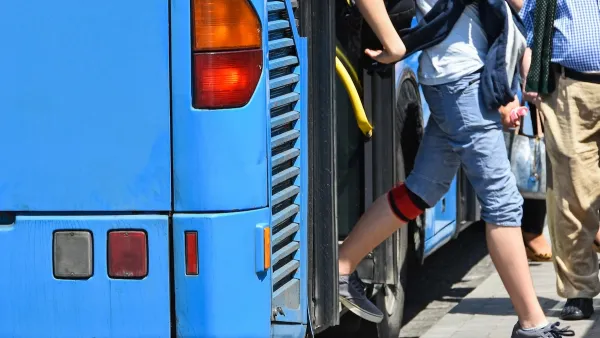A system of beacons will send signals to cell phones in Houston to help bus riders find stops and navigate public transit safely.
Houston's limited sidewalks and wide streets make it difficult for anyone to navigate on foot or by bus, doubly so for the visually impaired. The city's transit agency is now taking a step to address that issue. "For less than the cost of a single bus, however, Metro might be the first transit agency in the country to take a significant step across an entire bus system that could open riding options to scores of vision-impaired customers with the use of a smartphone," Dug Begley reports for the Houston Chronicle.
The system of beacons placed on top of bus stop poles identify the stops for cellphones. Often finding a stop on a long block can pose a challenge for those with limited vision. Now, using beacons, a bus rider's phone will get signals as they approach a stop.
The system is likely to be relatively inexpensive to install. "Installing a beacon at all of Metro’s roughly 9,000 bus stops is expected to cost $375,000, meaning for less than the cost of a single bus every place that a bus stops will be accessible to the visually impaired and others," Begley writes.
FULL STORY: Beacons put Metro at forefront of disabled service advances for transit

Planetizen Federal Action Tracker
A weekly monitor of how Trump’s orders and actions are impacting planners and planning in America.

Maui's Vacation Rental Debate Turns Ugly
Verbal attacks, misinformation campaigns and fistfights plague a high-stakes debate to convert thousands of vacation rentals into long-term housing.

San Francisco Suspends Traffic Calming Amidst Record Deaths
Citing “a challenging fiscal landscape,” the city will cease the program on the heels of 42 traffic deaths, including 24 pedestrians.

Amtrak Rolls Out New Orleans to Alabama “Mardi Gras” Train
The new service will operate morning and evening departures between Mobile and New Orleans.

The Subversive Car-Free Guide to Trump's Great American Road Trip
Car-free ways to access Chicagoland’s best tourist attractions.

San Antonio and Austin are Fusing Into one Massive Megaregion
The region spanning the two central Texas cities is growing fast, posing challenges for local infrastructure and water supplies.
Urban Design for Planners 1: Software Tools
This six-course series explores essential urban design concepts using open source software and equips planners with the tools they need to participate fully in the urban design process.
Planning for Universal Design
Learn the tools for implementing Universal Design in planning regulations.
Heyer Gruel & Associates PA
JM Goldson LLC
Custer County Colorado
City of Camden Redevelopment Agency
City of Astoria
Transportation Research & Education Center (TREC) at Portland State University
Jefferson Parish Government
Camden Redevelopment Agency
City of Claremont





























